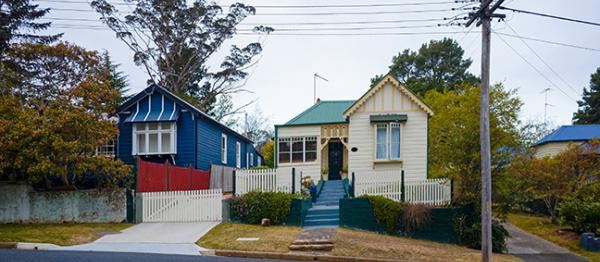11 May 2023
New homes will soon have a 7-star energy rating. So, what's changing?
From October 2023, state and territory governments will require new homes to have at least a 7-star energy rating. So what does that mean, and how is that rating achieved?

In September 2022, state and territory building ministers agreed to update the National Construction Code (NCC) to ensure that every new house built in Australia from October 2023 onwards will have a minimum 7-star energy efficiency rating.
The scale that it’s measured on - the Nationwide House Energy Rating Scheme (NatHERS) - goes from 0 to 10, with 0-starred homes doing practically nothing to reduce the discomfort of hot or cold weather, and those with 10 stars not requiring any artificial heating or cooling to keep occupants comfortable. Australia’s current minimum rating is 6 stars.
In an average Australian home, heating and cooling accounts for 40% of energy consumption, with the remainder split between water heating, appliances and lighting, according to the Department of Industry, Science, Energy and Resources.
So why change?
Increased energy efficiency means a house should use less electricity or gas for heating and cooling, so with more stars comes smaller energy bills. And according to NatHERS, a 7-star rated home will use 25% less energy than a 6-star rated home. While the cost of building materials may rise slightly, the investment in energy efficiency will pay dividends.
If you’re in an existing house, or have already started building, the change won’t apply to you. State and territory governments aren’t expecting every home to meet 7-star compliance. And there are allowances for homes built in warmer and more humid parts of Australia. NatHERS says, “there will be allowances for 6 and 6.5 star houses with a compliant outdoor living area in climate zones 1 and 2” - that's the Top End and eastern Queensland.
For everyone else, there are plenty of steps you can take to help to make your home more energy-efficient. Here’s where you can start:
- Get double or triple glazing: the affordability and range of energy efficient windows has improved significantly in recent years. The size of your windows, orientation and shading can also improve energy efficiency and should suit the climate in your area.
- Think about zoning in your home: more doors mean greater ability to control temperature in your home. Doors to close off occasionally used rooms, like media and rumpus rooms, or other parts of your home that are accessible by stairs, reduce your need to heat and cool those spaces.
- Paint and insulation: reduce your home’s absorption of heat by lightening external roof, wall and window frame colours. Energy efficiency may also be improved by increasing the R value (that's the measure of how well barriers resist the flow of heat) of wall, floor and ceiling insulation or extending insulation to new areas e.g. slab edge, underneath the slab, the garage wall and internal walls.
- Incorporate fans into your design: building ceiling fans, which use a fraction of the energy of air conditioning units, into your rooms will cool occupants while boosting energy efficiency.
- Use smart lighting solutions: homes with fewer ceiling penetrations receive higher energy efficiency ratings. Eliminate skylights, roof windows and non-IC4-rated downlights where possible and replace them with other lighting options that allow for continuous ceiling insulation.
NatHERS’ top tip for new home builders and renovators? Get building assessors involved early. NatHERS accredited assessors consider multiple factors, including the building materials that make up the home, as well as environmental factors such as climate and orientation. They’re extensively trained to improve ratings and help out with options to get to 7 stars and beyond. Also available voluntarily for existing homes, accredited assessors provide advice on opportunities for improvement, with the cost of an assessment from $250 to $500.
NatHERS’ website includes links to get in touch with an accredited assessor in your area, and also features a handy info sheet on how to improve efficiency in your home. If you're looking for inspiration, the government’s provided plenty of resources for getting your home to the magic 7-star level. The YourHome Federal Government website provides free, climate zone-specific designs of 7-star house plans - so you can get planning on a home that not only meets the national requirement, but helps you to work towards greater comfort and smaller bills for years to come.
To find out about NRMA Home Insurance, simply call us on 132 132 to get a quote or find us online 24/7 at nrma.com.au.



